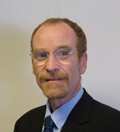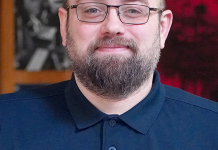
Q: Tell me a little about the history of Dry Coolers, Inc.
We started in 1985 to provide cooling water solutions for heat treating equipment—for vacuum furnaces, induction systems, and convection fans on atmosphere furnaces. We have diligently applied that trade for many years and, since then, we’ve broken out into other operations related to high-temperature metals.
Q: What exactly is a dry cooler?
They are similar, in theory, to a large radiator in a car — copper tubes, aluminum fins, and fans that blow over them. When you close the loop with a pressure relief valve, like you seal the system in your car with a radiator cap, you can keep all the oxygen out of the water, preventing corrosion and biological problems that scale up the inside of the furnace with minerals. It protects the equipment, cools it more cheaply, and conserves resources.
Q: That was only the beginning, though…
That was our starting base, right. Then, we expanded into doing evaporative cooling systems, with cooling towers and tanks and pumps, still keeping the closed loop concept for the furnaces.
Our customers then led us, by request, into making mechanical chillers—refrigeration machines to cool water even colder. With a dry cooler, you can only get down to close to whatever the outdoor air temperature is—whatever the thermometer says. With an evaporative cooling tower, you can go a little below that down to the evaporating temperature, a little below what the thermometer says. But if you need some 60°F water, you still have to refrigerate it.
Now we make all those things, including some gas coolers. We also do heat recovery and hybrid systems with chillers and air-cooled heat exchangers—what we call a “free cooler” in the winter. We combined different designs to get the best, most efficient reliable experience for a customer.
Q: Tell me about your employees. What kinds of engineers do you have working there?
We have four mechanical engineers and several designers. Our chief engineer, Matt Reid, has been with us 15 years. Gary Burwick is another, an engineer experienced in air-cooled heat exchangers, especially for heat treating equipment. Phil Siemen has a great deal of experience in institutional cooling—almost high end commercial grade systems. We build all of our own control patterns. They’re all UL-508A certified. The company is ISO 9001:2008, recertified every year.
Q: Dry coolers has an overseas presence as well, don’t you?
Market forces led us to participate in a joint venture with M&C Pumps in China called DCMC Thermal Technologies. A lot of businesses have moved to Asia—in the 80’s and 90’s we were exporting a lot of equipment to China through our furnace OEMs in America and in Europe. Many of our customers would build a green field facility in Europe and wouldn’t want to take a chance with the local cooling system, so they’d package our equipment with their whole furnace line and ship it over there.
As that business started to go away, many of the furnace companies have opened factories in China, notably Ipsen, Seco Warwick, and AFC. They’ve requested that we help them over there. So we teamed up with a pump manufacturer there, who is our joint venture partner. Now we’re actively selling quench oil coolers and vacuum furnace cooling systems in China.
Q: How do you see your industry continuing to spread?
I think the expertise in metallurgy in general, whether it’s for forging or gears or just heat treating, is a pretty small group of people, really. It’s a global industry, so that expertise is spreading around the world.
There’s always a strong market in North America and Europe, but there are also other areas of the world. We found that we were welcomed in open arms in China, either by domestic Chinese companies or wholly owned foreign enterprise furnace manufacturers. We’ve been well received because we have a good reputation from being in this business for so long. Many of our first customers that we started with—AFC, Surface Combustion, Ipsen—they were our original OEMs and we still sell to them today. To have a good long track record and be a good partner with the customer, they’ll want to take that overseas.
Q: Tell our readers about the software you use to design the dry coolers:
For heat exchanger selection and thermal calculations, we’ve written almost all that software internally. For design we use 3D CAD modeling for all our products, mostly solid works. We use AutoCad electrical for designing the electrical pads and circuits. And we have an ERP (Enterprise Resource Planning) system that runs a database that we’ve created. We’ve been computerized since the beginning, so we have all of our records, all the machines we’ve ever built from the beginning. It makes for a pretty efficient process. We’ve always tried to stay at the cutting edge of electronic technology. Now we’re finally at the point where we’re putting some of our software on the web for our customers, so they can go create their own proposals. We’re starting out with the air-cooled quench oil coolers, and we’ll branch out from there.























